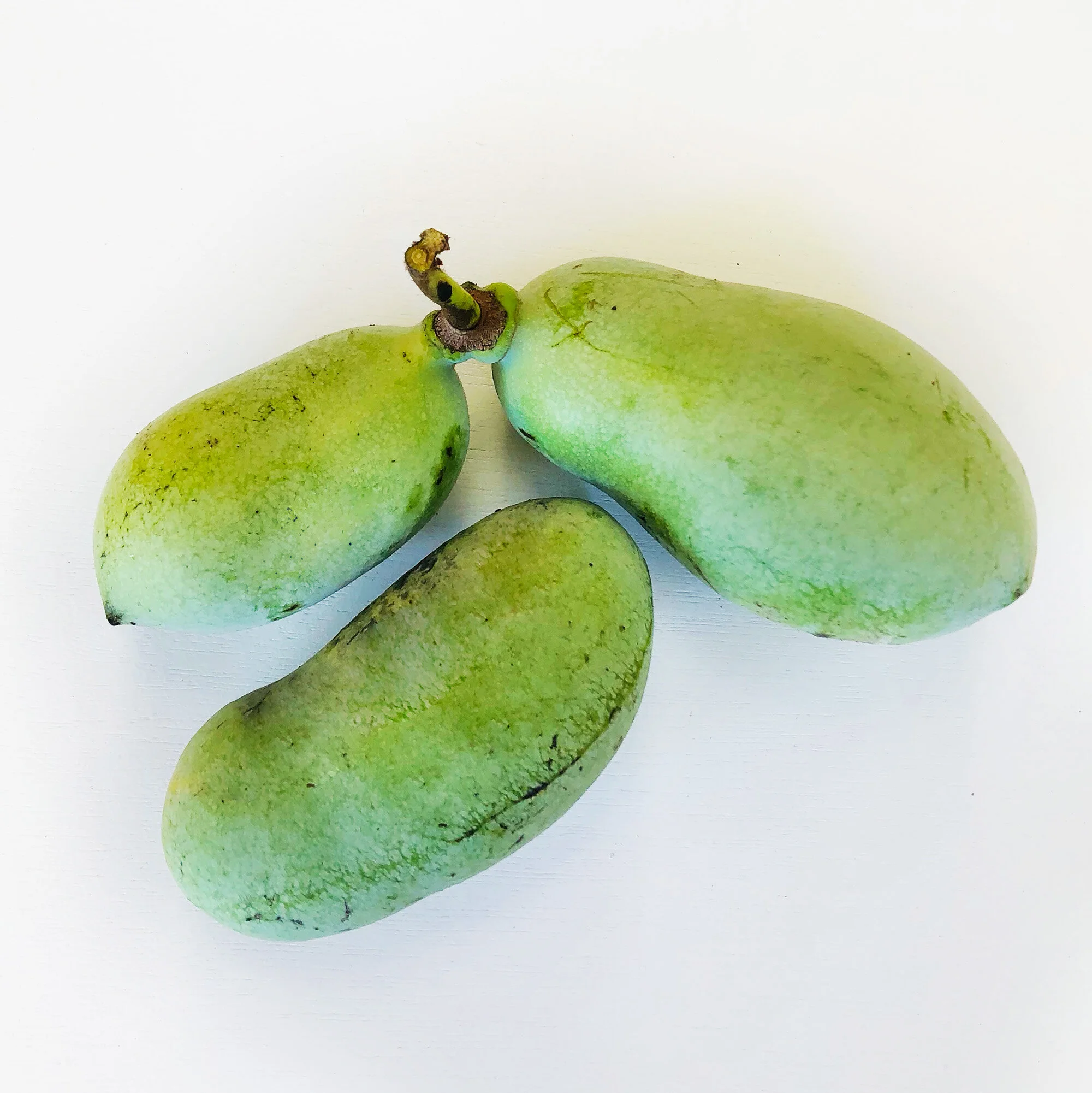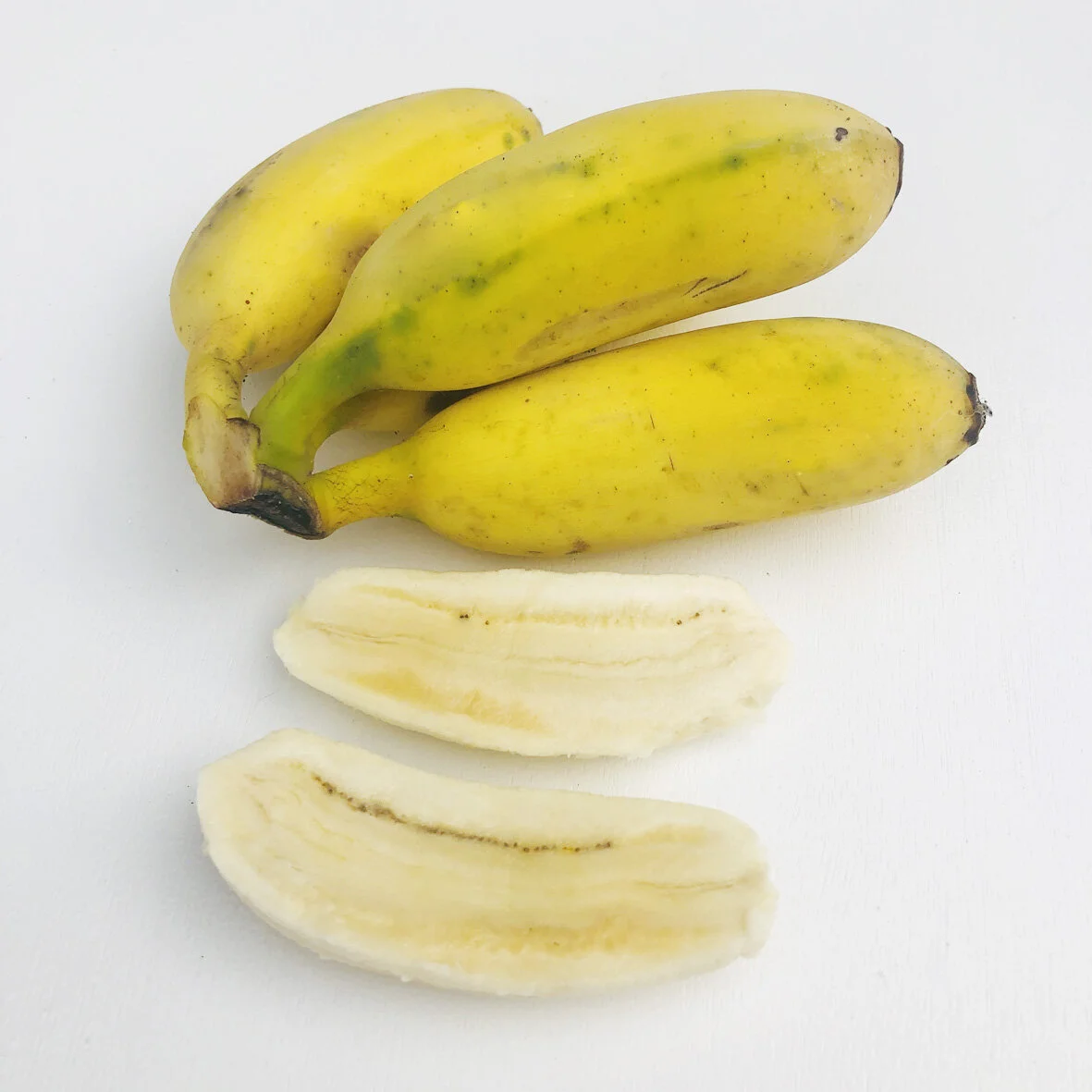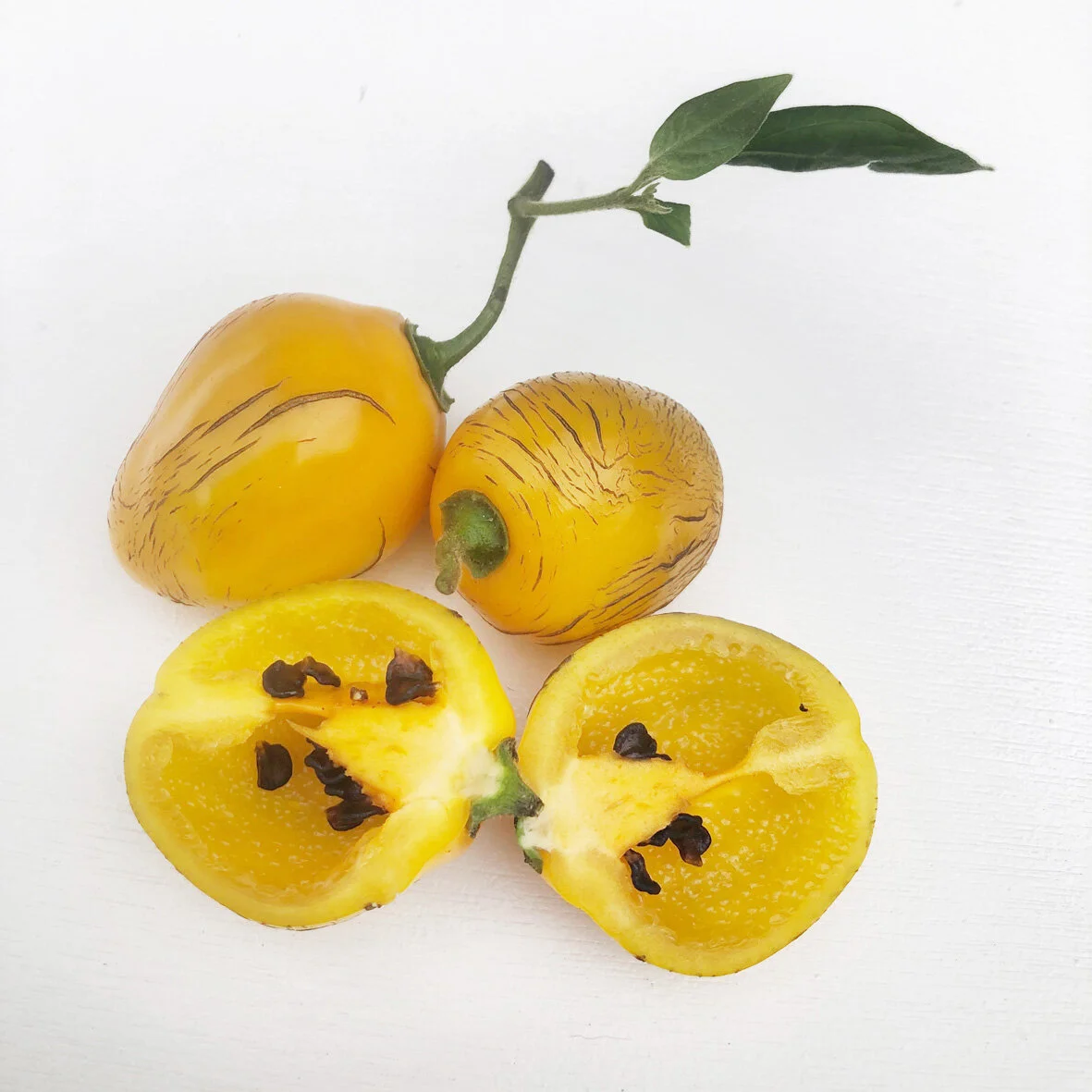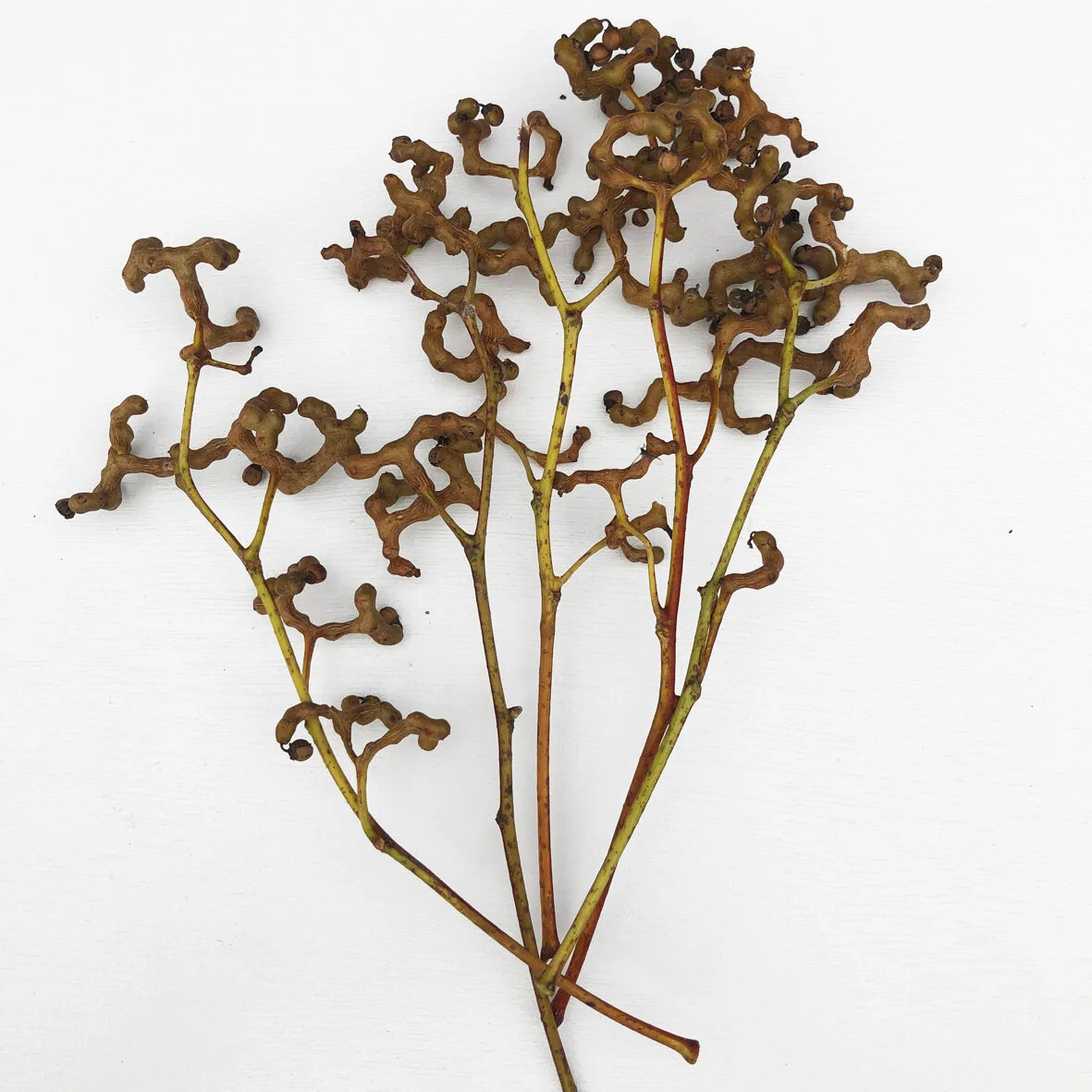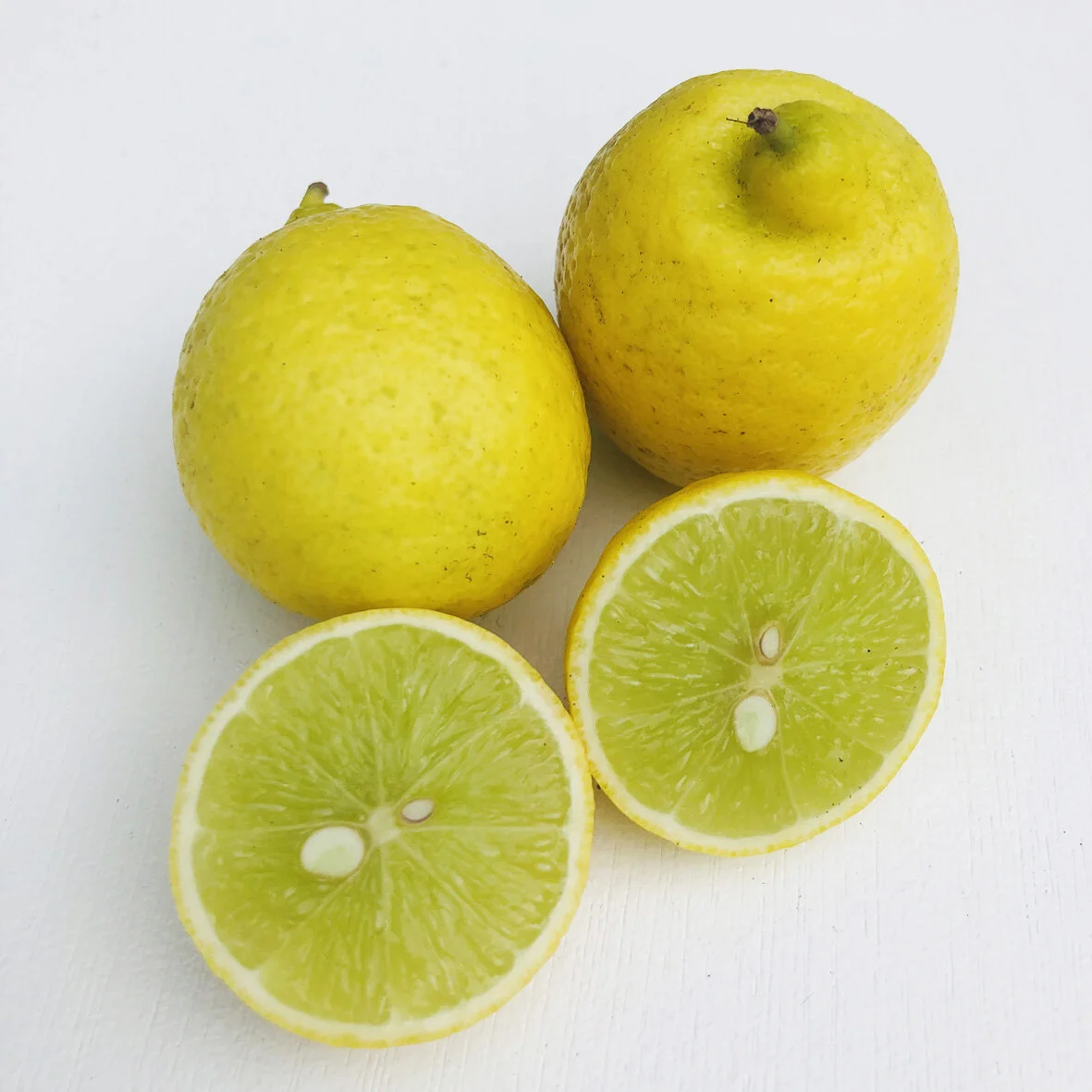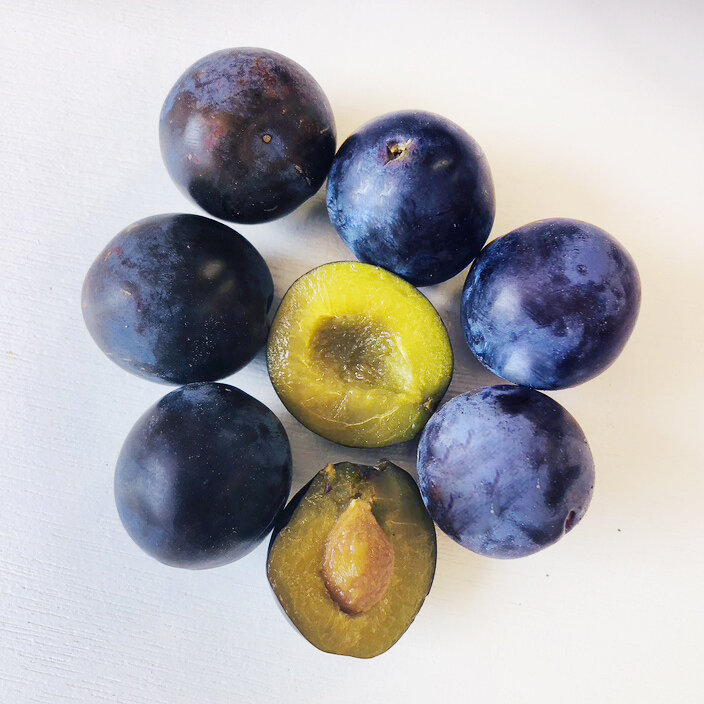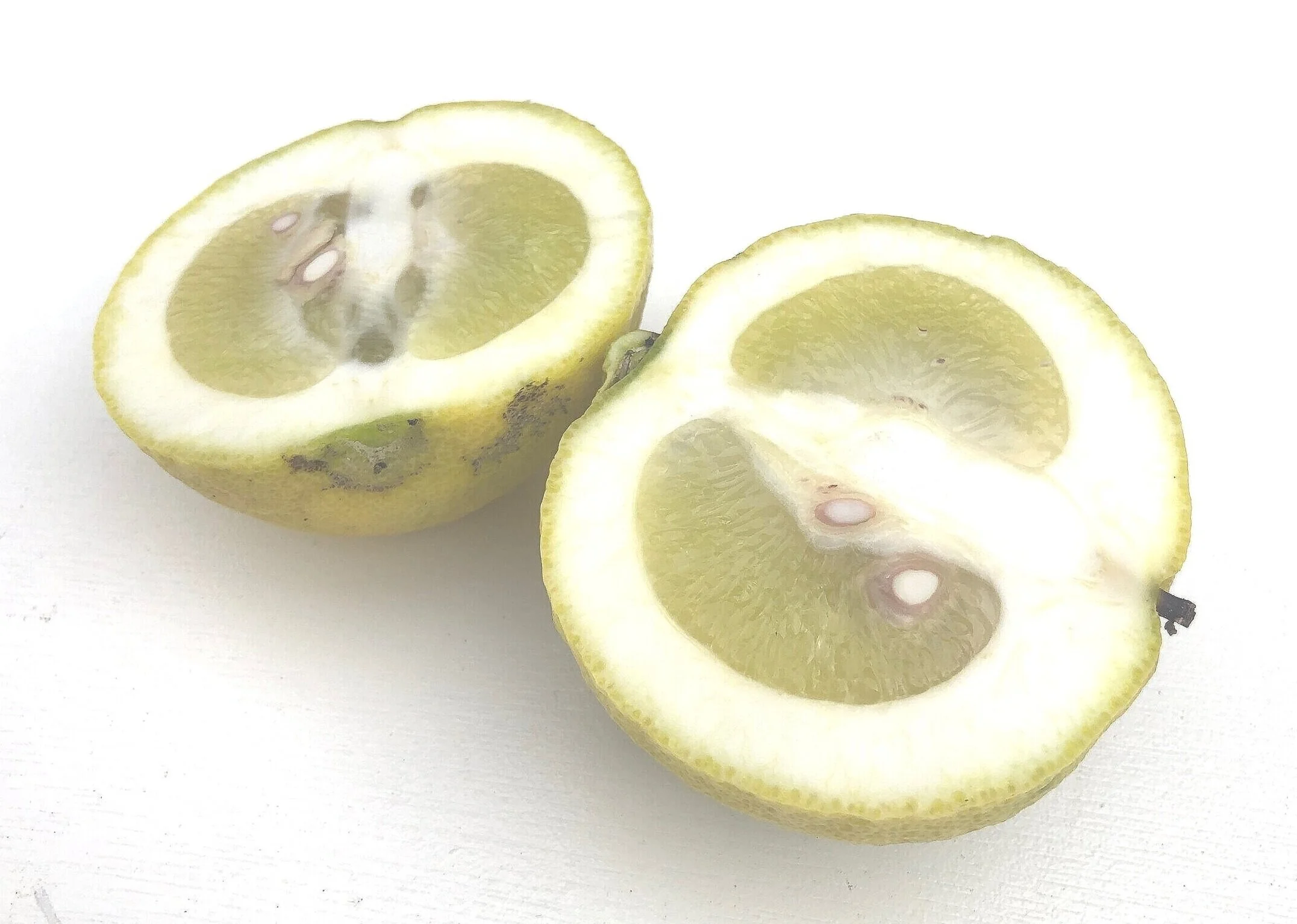Salt River Fruits
Asimina triloba (North American Pawpaw)
Season: March, April
Native to eastern USA. This is not a pawpaw as we know it. Asimina is closer to mango in texture and flavour – sweet, creamy, perfumed, and a little banana-ish. Once barely soft, refrigerate asimina immediately and eat within two to three days. Good in smoothies too.
Avocados (Persea americana)
Season: November-May
We mostly sell the popular Hass avocados but also grow and occasionally sell several other types - including Reed, Fujukawa, Hellen, one we call ‘Early’ and a hard-shelled avocado with a particularly creamy flesh we call Guatemalan (based on the typically shell-type nature of Guatemalan avocados).
Bananas (Musa)
Season: All year
These New Zealand grown and naturally ripened bananas mostly look very different from the imported bananas we are used to.
These are often best eaten when the skins are starting to look overripe by your usual standards, mottled and spotty. The flesh remains firm inside and gets deliciously sweet and sticky, as a good, real banana should be. Experiment and find your perfect ripeness. Delicious!
Most of our bananas are Misi Luki or Ladyfinger.
Banana flowers
These are popular in some South East Asian and Indian dishes. The darker, tough husks (often a purple hue) on the outside of the flower need to be stripped away to reveal the tender, yummy yellow-green leaves inside.
Then use raw or cooked.
Casimiroa Edulis (White sapote)
Season: March-May
Delicious served fresh and chilled with a squeeze of lemon. It's nice to cut them up as they are a tricky fruit to eat out of hand. They also make a great base for a subtropical fruit salad. Combine them with acidic fruits such as passionfruit and tamarillo to tone down the creamy sweetness - but then that crazy sweetness is just what some people love. (Casimiroas are 27 percent sugars, highly nutritious, and rich in vitamins A and C.)
If not eaten fresh, casimiroa is great in milkshakes, ice-cream, etc.
Handling: Casimiroa is a fragile fruit that bruises easily. Buy firm fruit for ripening at home. Keep it at room temperature and check each day for softness. Once the fruit softens, put it straight in the fridge where it will keep for up to a week. The pulp can also be frozen and will keep its flavour.
Casimiroa Edulis, a native of the Mexican Highlands, is destined for big things. It is extraordinary that such a delicious food has been overlooked for so long. Texture is creamy, smooth and butter-like and the flavour is sweet and rich, resembling most a banana custard. - Louis Glowinski, International Rare Fruit Council
Cherimoya (Annona cherimola)
Season: October-December
Cherimoya is delicious served fresh and chilled. Peel lightly and then chop as this fruit is tricky to eat out of hand. A squeeze of lemon or lime goes well, and is also good if storing cut fruit in the fridge. Cherimoya is great in smoothies and ice-cream too.
Handling: Cherimoyas are ready to eat when they’re still firm but have just a little bit of give, like an avocado. If buying hard, keep the fruit at room temperature and check each day for softness. Once ripe, put them straight in the fridge where they will keep for up to a week. The pulp can be frozen and holds flavour.
Chilli
Rocoto/Manzano chilli (Capsicum pubescens)
This is twice as hot as the jalapeno. It’s apple-like shape hints at fruity and it doesn’t disappoint, with a refreshing citrus flavour. This fruitiness, along with the chilli’s thick walls, makes the manzano a superb salsa chilli.
Feijoas (Acca sellowiana)
We grow a large variety of feijoas and tend to sell as a mixed lot rather than by type - partly because we don’t know which is which! (If you are a feijoa expert and want to help us out here, come and visit…)
Grapefruit
Season: July - September
Cutler’s Red (Citrus x paradisi)
Cutler’s has large, deep orange, sweet, juicy fruit with just a little zing. The rind is thick.
Guava
Our varieties include:
Tropical Pink (psidium guajava)
Season: October, November
These are the pink tropical variety. We generally use them all up ourselves for jelly but do get in touch if you especially want these.
Cattley/Chilean (Psidium Littorale)
We have both the red and green cherries of these.
Jaboticaba (Plinia cauliflora)
“Jaboticaba is one of the strangest and most delectable fruits.” Russell Fransham, subtropical plant nurseryman
Jaboticaba is one of the favourite fruits of Brazil. They are best eaten fresh. Hold the fruit in between your front teeth and quickly bite into it to crack the skin open. Then press it to release the inside into your mouth, as you do with a soft skinned grape. Jaboticabas can also be made into cordial, wine and jelly. Store in the fridge.
Jaboticaba is like a blackcurrant grape with a slight astringency. It is high in antioxidants and vitamins B and C.
Japanese Tree Raisins (Hovenia Dulcis)
Season: May-July
Pinch off and eat the swollen ends of the branches (peduncles). A pear-like flavour develops as the sugars increase.
Raw, the peduncles taste like a combination of raisin, clove, cinnamon and sugar. In cooking, chop them up to use as you would raisins (though you don’t have to dry them).
In China, the peduncles are made into a beverage called ‘tree honey’ that is said to neutralise hangovers. Eating the peduncles raw shortly before and after drinking alcohol is also said to limit hangovers.
Tree raisins come from a wide distribution range in China and the Himalayas.
Lemons
Our varieties include:
Eureka lemons have consistent flavour, firm texture and a high oil content. The juicy, yellow flesh contains few to no seeds and offers a tart and acidic flavour.
Lisbon (Citrus limon)
Usually seedless, the Lisbon are grown primarily for their acidic juice.
Season: June-November
Sweeter and softer than a true lemon, Meyers are hugely popular in New Zealand. This Chinese native is generally sold as a lemon in shops and is probably the most common ‘lemon’ in stores - for good reason. It is delicious, and versatile, but if you want that sharper taste best go for a true lemon.
Ponderosa (Citrus x pyriformis)
Season: July-December
These giant, knobbly yellow fruit are a showstopper. Gorgeous on a kitchen counter, ponderosas stem from pomelos but have the same flavour and acidity as a true lemon and can be used accordingly.
Rough lemon (Citrus jambhiri)
Popular in some parts of India and South Africa, Rough Lemon is more acidic than ordinary lemons and easier to peel.
Yuzu (Citrus junos)
Season: May-July
Sour, tart and very fragrant, these Japanese lemons are highly valued for the unique and distinct flavour of their zest and juice. They feature strongly in classic Japanese sauces such as Ponzu.
Yuzus have many pips and limited juice (therefore considered a citron), but what they do yield gives a lot in flavour terms. They are one of the few citrus in the world that is able to maintain it's tart/sourness at high cooking temperatures
You can use them many ways. Have a play - fantastic in gin for example!
The Mexican or Key lime is naturally smaller than the Tahitian and has higher acidity and a stronger aroma, as well as a thinner rind.
Famously used in key lime pies.
Tangy, juicy and relatively seedless, the Bearrs - or Tahitian - lime is more common that the Key lime and slightly sweeter in flavour.
If you juice it, take care not to push too hard against the pith as it will make your juice bitter.
Rangpur Lime (Citrus x limonia)
While not a true lime, the Rangpur lime is highly acidic and is a wonderful substitute for regular limes due to its lime-like zestiness and its orange-like juiciness. The flavour is said to be a little bit smoky.
Loquats (Eriobotrya japonica)
Our loquats are larger than the wild ones found all over Auckland - also delicious.
Loquats, native to China, are prized for their sweet, highly refreshing, peach-like flesh. Low in calories and packed with nutrients, these are best finger peeled and then eaten out of hand.
Mandarins
Our varieties include:
Clementines
Clementines are sweet and seedless and have a smooth, deep orange, glossy peel.
Sweeties
Especially sweet flavour, easy to peel, almost seedless.
Kiwi Gold
This is a high-acid, juicy mandarin, good for those who like sharp and tart.
Scarlett Burgess
Rich-flavoured mandarin with highly coloured, aromatic, easy-peel fruit.
Quince
Season: April, May
Our varieties include:
Chinese quince (Pseudocydonia sinensis)
Closely related the European quince and very similar in flavour, these differ in that they are much bigger, don’t have any fuzz on the skin, and are a little softer to work with.
Quince (Cydonia oblonga)
Classic quince; perfumed, fuzzy, hard - and delicious cooked.
Oranges/Tangelos/Tangors
Our varieties include:
Tangor Dweets (Citrus reticulata Blanco)
Season: June, July
A cross between an orange and a mandarin, these are sweet and extremely juicy with rich flavour and fairly easy peel. Fruits named Tangor come from a combination of TANG-erine and OR-ange – thus Tangor. Dweet is a variety.
Season: August-November
Discovered growing wild in Jamaica in 1924, is thought to be a hybrid of tangerine, seville orange and pomelo or grapefruit. This super juicy, tangy fruit is remarkably easy to peel.
Vainiglia Pink (acid free)
This most unusual acid-free orange is like a different fruit altogether. Some people love the light, almost perfumed flavour outright. Others like to juice them with acidic oranges to create a balanced, sweet juice.
These bitter oranges are the ultimate classic for making orange marmalade. They are for cooking only, as Sevilles are too bitter to eat out of hand.
Passionfruit (Passiflora Edulis)
Season: February, March
This is the classic black-skinned passionfruit, native to Southern Brazil through Paraguay and northern Argentina.
Our fruit sometimes looks imperfect but is good inside, a consequence of not using fungicides. In commercial crops up to 20 fungicides can be sprayed in a year.
Peach
We grow a few varieties of peaches. We don’t generally sell them but do inquire if you are specially interested.
Persimmons (Diospyros virginiana)
Season: April,May
There are two types of persimmon; astringent and non-astringent. The way you eat them really differs. Persimmons continue to ripen once picked.
Ripen astringent fruit till they are soft as jelly. Cut in half and scoop out the flesh. Delicious cold. Rich in vitamins A,C, E and B6.
Eat the non astringent fruits as you would an apple - crispy and fresh. You still need to make sure they are properly ripe though - if they have a slight astringency, wait a little longer.
Plums (Prunus domestica)
Season: January-March
Our varieties include:
Damson
The quintessential cooking plum. Buy to make delicious tart jam or discover how easy it is to make damson gin, for example. You can eat damsons outright but they are too tart for most palates.
Ooray or Davidson Plum
Ooray, or Davidson, is an Australian ‘bush tucker’ plum from New South Wales and Queensland. The deep dark purple fruits contain a soft juicy pulp with a sharp acidity. The aroma is earthy, like fresh beetroot with slight pickled notes. We make a jam from it - similar but more intense than Damson.
Hawera
A fantastic sweet, juicy, red-fleshed plum. The fruit is large with a dark red skin.
Whakapiro Gold
These are large, sweet and highly juicy yellow flesh and skin plums.
Pomelo
Our varieties include:
Chandler’s Pomelo (Citrus maxima)
Ancestor of the grapefruit and native to South East Asia, pomelos have a sweeter, less acidic flavour than grapefruit. Strip the thick pith and enjoy the delicious, refreshing flesh in a myriad of ways. Great in salads.
Salt River Pomelo
We haven’t been able to properly identify this prolific pomelo - so have called it our name for now. The fruit and skin are yellow like the Chinese honey pomelo but it is smaller - more like a large orange. Lovely flavour.
Tamarillos (Solanum Betaceum)
Season: May-August
Our varieties include:
Tango
These smaller-sized red/orange tamarillos have been specially bred for low acidity and extra sweetness. Delicious cut in half and eaten as is.
Ted’s Red
This popular selected variety is known for it’s large, rounded, bright red fruit. The flavour is full with reasonably high acidity.
Mixed
We have many different, often unidentified types of tamarillo - so sometimes we sell them as a mixed bag.

